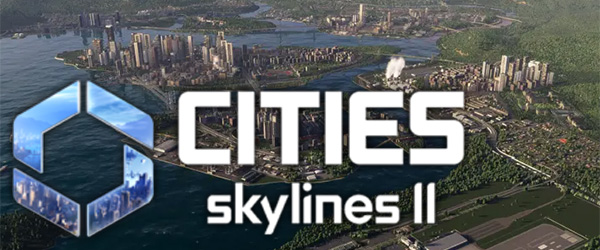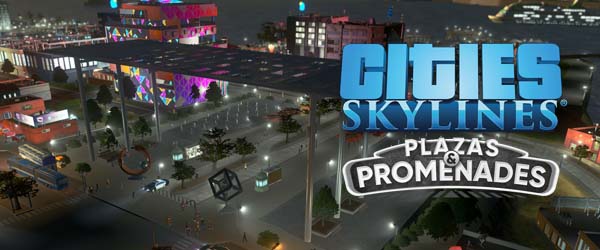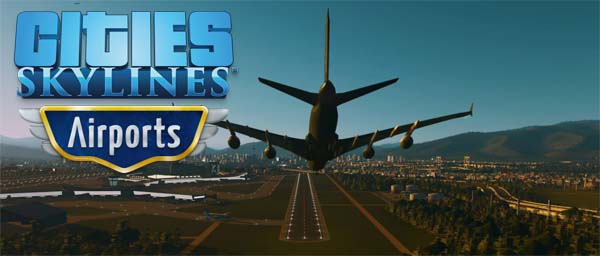
I've been playing Cities: Skylines for almost 10 years. As soon as I started playing it, I recognized it as the definitive city-building game. It blew its contemporaries, such as SimCity (2013) and Cities XL out of the water. It was a smash success that developed a massive following and spawned 11 full expansions, 4 mini-expansions, 21 asset packs, numerous music packs, and thousands of player-created mods and custom assets.
Creating a sequel to a game that is so beloved and content-rich can be challenging or daunting. Sequels to extensively-expanded games, such as any given entry of The Sims, Civilization, Crusader Kings, World of Warcraft, Rock Band, and so forth, run the extreme risk of feeling bland, empty, and incomplete compared to their content-rich and/or mechanically-complex predecessors. This can leave the sequel feeling underwhelming to long-time audiences, who might return to the older game because they crave the extensive, familiar content. The Sims in particular is infamous for stripping out popular expansion content, and then selling that content back to consumers again (and again) as an expansion pack for the sequel. The most notable example is probably that every Sims game has a "Pets" expansion, because EA could never bite the bullet and just put dogs and cats in the vanilla launch of a sequel.
Sequels to expanded games often strip out popular content to re-sell as expansions.
The sequel to Cities: Skylines is a bit of a mixed bag in this regard. On the one hand, yeah, a lot of content from the original game is absent from the sequel, and the options for what players can build can feel a bit sparse. On the other hand, the vanilla release of Cities: Skylines II retains something from almost every one of the original game's expansions. It even includes content and mechanics that were part of some of the smaller content packs and from popular mods.
The vanilla game includes a day/night cycle that was introduced in the original's After Dark expansion. Some of the economic models of the After Dark and Industries expansions have been expanded in scope to apply to the entire game, thus alleviating some of the need for explicit tourism, leisure, or specialized industry districts. It took the winter themes of Snowfall and fleshed it out into a full seasonal cycle. It includes some of the weather and disaster events from Natural Disasters, as well as some of the early-warning and shelter infrastructure. It includes modular upgrades and customizations to certain buildings and infrastructure, as well as large industrial areas, that fills a similar role as the modular areas of Parklife, Industries, Campus, and Airports (though I'll talk more about this mechanic later in the review). It includes pedestrian roads from Plazas & Promenades. It includes eco-friendly variations of utilities that were part of the Green Cities expansion. And of course, it has road-building and transit-planning tools that largely leave Mass Transit in the dust.
It even includes sports parks and parking lots, which were late DLC content released for the original game in the last couple years. And the road-building and traffic-management tools have much of the functionality from the popular "Road Anarcy" and "Network Extension" mods. And that's to say nothing of all the brand new content, mechanics, and more complicated simulation! So even though it is not as full or content-rich as its predecessor with its double-digit expansions (how could it be?!), Cities: Skylines II is still a fully-featured and content-rich city-builder that can be played for many hours before going stale.
Some content and mechanics from almost every CS1 expansion are included in CS2's launch.
But as I said, there is quite a lot of content from the original game that did not make the cut, and which is sorely missed. For one thing, bicycles and bike lanes aren't in the game at launch, which is a kind of baffling decision (considering this game is developed in Scandinavia, where bicycling is huge). There also aren't any walls or fences or quays, and the tool for disabling zoning on either side of a road is strangely absent. So it's back to using pedestrian paths to remove zoning from arterial roads. Zoning is actually quite a bit of a pain in the ass in the sequel, and I am frequently fighting with the road layout, zoning squares, and pedestrian paths to try to get my city to look the way I want.
If you were particularly fond of leveling up and expanding things like industrial parks, nature preserves, amusement parks, universities, and so forth, then you might be disappointed by their absence. In fact, recreation, leisure, and tourism options are very spares in the sequel, as it lacks the tourism and leisure districts of the After Dark expansion. You also won't be building any small fishing villages, since Sunset Harbor is the one expansion that doesn't have anything being carried over into the sequel.
To its credit, the vanilla release of Cities: Skylines II feels more content rich and mechanically-compelling compared to the vanilla release of the original Cities: Skylines. But there's so much absent from the original game, that I un-install the original from my PC with a degree of trepidation.
There is some content from CS1 that is conspicuously absent. [More]
a2c0f15c-0983-4034-a8e5-7561b2c76190|0|.0
Tags:Cities: Skylines, Cities: Skylines 2, Colossal Order, Paradox Interactive, city, city management, city simulation, seasons, industry, parking, tourism, poverty, homelessness, welfare, subsidies, ray-tracing, volumetric lighting, Sedona, Barstow
A video retrospective of the last few years' of Cities: Skylines expansions and DLC is on YouTube.
I recently published a new video essay to my YouTube channel about the last few years' worth of expansions and DLC for Cities: Skylines. I will not transcribe the entire essay here, since most of what is in the essay has already been presented in my various reviews of the relevant expansions and DLC. This video features my impressions of the Campus, Sunset Harbor, Airports, Plazas & Promenades, and Hotels " Retreats expansions, as well as the World Tour DLCs (including the Financial Districts mini-DLC and content creator packs).
In summary, while most of these expansions were even more limited in scope than the earlier Cities: Skylines expansions, they started to show some signs that Colossal Order was starting to address some of my long-standing complaints and criticisms with the earlier expansions. Most notably, the newer expansions started to back-port new features and mechanics into the older expansions, such as adding new buildings if players have other expansions installed, or adding new mixed-use transit options that combine transit methods in the new expansions with transit options found in old expansions. It's a lot of subtle stuff, but it goes a long way towards making all the expansions feel more robust and homogenized.
In addition, the newer expansions and content creator packs started introducing assets that I had been asking for for a very long time. These include native parking lots and garages, sports parks such as baseball diamonds and football fields, and new sports stadiums. Sadly, we still don't have public beaches, water parks, or golf courses.
These subtle changes to the way that the expansions also expand other expansions has me very excited and optimistic that Cities: Skylines II will learn lessons from the original game's expansions' faults, and will offer much more robust and complete expansions. [More]
3d066878-8bea-4b2b-9fa2-9e1a9cfbe25f|0|.0
Tags:Cities: Skylines, Cities: Skylines 2, Colossal Order, Paradox Interactive, expansion, Cities: Skylines: Campus, Cities: Skylines: Sunset Harbor, Cities: Skylines: Airports, Cities: Skylines: Plazas and Promenades, Cities: Skylines: Hotels and Retreats, YouTube, Patreon
This week, Colossal Order finally formally announced the anticipated Cities: Skylines 2 and released an official announcement trailer. Unfortunately, the trailer does not have any actual gameplay footage, nor are there any actual in-game screenshots available (that I know of). However, I do want to take some time to go through what is shown in the trailer and make some inferences about what may or may not be in the actual game. Even though the trailer is a pre-rendered cinematic, instead of actual gameplay, we can assume that what is shown in the trailer is intended to represent the actual content of the game -- at least on an abstract level.
First and foremost, here is the trailer itself, in its entirety. I recommend you watch it before reading on.
Cities: Skylines 2 has been formally announced by this trailer.
I will be breaking the trailer down based on 3 criteria. The first is what the narration says, which may provide some hints as to how the game will play. The second is what is actually shown in the trailer. The final category is things that are not included or implied by the trailer.
[More]
cee4240a-11c4-42a4-bfae-e7b10fd50503|0|.0
Tags:Cities: Skylines, Cities: Skylines 2, Colossal Order, Paradox Interactive, city management, trailer, urban decay, waterfront, seasons, parks, traffic, beach, parking, homelessness

Looks like we're back to seeing 2 Cities: Skylines expansions being released in the same calendar year. Airports released in January, and now in September, Plazas & Promenades hit digital storefronts. I wonder if this will continue now that most businesses (and presumably Colossal Order) are back to business as usual following the COVID pandemic? Or maybe Colossal Order is migrating towards releasing even smaller, more module micro-expansions such as the recently-released Financial Districts DLC (which I'll review later)? Or will we finally see an announcement on the rumored sequel to Cities: Skylines soon?
Based on previews, I was expecting this expansion to completely change the way that I build my cities by giving me more freedom to pack structures into compact spaces and to more seamlessly integrate parks with business districts, leisure and tourism districts, or neighborhoods. I immediately started thinking of multiple ways that I could potentially use these 2 ideas to create new city layouts and concepts. Unfortunately, I set my expectations too high, and pedestrian areas ended up not being quite as game-changing as I thought and hoped they might. The big problem is that Plazas & Promenades is just another iteration of the paintable area concept that has been the focus of almost every expansion since Parklife. Paintable areas is a good mechanic for things like parks and university campuses, but it can be extremely limiting for an application as broad as neighborhoods or entire districts.
Plazas & Promenades allows the construction of more walkable neighborhoods and districts.
Roads minus the cars
First and foremost is the simple fact that the new pedestrian roads look and act more like regular roads than like pedestrian paths. They are the same size as roads, being either 2 or 4 tiles wide, and are laid out almost exactly the same. None of these pedestrian roads are 1 tile wide. And, of course, the legacy pedestrian paths have not been updated to allow buildings to be zoned along them. The end result is that these "Pedestrian Zones" don't take up any less space, and aren't any more compact than any other district. Though, the high-density, "wall-to-wall" residential buildings do have the same capacity as the normal, high-density residential skyscrapers (20-26 households), despite being a fraction of the size. So I guess it's "more compact" vertically? More people being crammed into smaller spaces? If so, it doesn't seem to have any impact on the citizen's happiness or satisfaction ratings.
Using Pedestrian roads outside of Pedestrian Areas is a liability, since zoned buildings may build on them.
Even though pedestrian roads can be placed anywhere, buildings can only be placed or zoned along them if they are in a dedicated Pedestrian Area. So if I want to create a single walkway or alleyway and zone some homes or shops along it, I have to paint the entire area as a Pedestrian Area. Well, at least, that is the case if you want the buildings to be functional. The game actually will let the player zone and place buildings along pedestrian roads outside of pedestrian areas, but doing so will result in the building flashing a "Not in Pedestrian Zone" warning, and the building won't operate.
[More]
18d09944-68e9-4886-b7fb-12dd3b3e66a3|1|5.0
Tags:Cities: Skylines, Cities: Skylines: Plazas and Promenades, Colossal Order, Paradox Interactive, steam, PC, expansion, pedestrian, roads, plaza, promenade, park, seaside resorts, mid-century modern, beach, boardwalk

After releasing 2 full expansions every year since the launch of Cities: Skylines, expansions seemed to dry up after 2020. Sunset Harbor released in March of 2020, and there hasn't been any full expansion since then. I'm not sure if this is the result of Colossal Order shutting down its studio temporarily during the COVID-19 pandemic, or if they have just been busy working on a sequel. I had assumed that Cities: Skylines was done, and that Sunset Harbor would be the final expansion for the game. But that is not the case, as a new expansion was finally released at the end of January 2022.
The Airports expansion is yet another expansion pack using the area-painting mechanic that was introduced in the Parklife expansion in 2018, then re-used in Industries and Campus in the subsequent years. As such, I don't know that I really have much to say about Airports. A lot of the same compliments and criticisms that were already applied to Parklife, Industries, and Campus also apply here.
Campus, ironically, did not teach Colossal Order any lessons
The modular nature of the airport buildings, taxi paths, and runways provides quite a bit of customization. There are 3 styles of airports: a retro-style, a modern style, and an "ultra-modern" style. They are functionally the same, so don't fill different roles the way that different parks, industries, or university types did in their respective expansions. The airports are massive and expensive, but they can be shaped to fit into irregular spaces in or around your city. Unfortunately, there's not nearly as much expressiveness as what we were offered by Parklife.
Airports come in different styles, and are customizable (parking lots and garage are mod assets).
Of course, Airports suffers from the same problems that have plagued the previous expansions that used the leveled-areas concept.
A lot of the modular components are simply decorative and have no function other than to increase the area's abstract "attractiveness". In the case of airports, these include the various hangars, parked planes, and so forth. Even the air traffic control tower is a purely decorative object, rather than being necessary for the airport to work!
I've also never liked how the park areas (and now the airport areas) level up by increasing the total visitors, and industries level up based on the total goods produced. This is something that is easy to achieve by simply waiting in-game months or years for the number to go up, regardless of the size or quality of the park, industry, or airport. Because of that, it can be easy for an airport to jump out ahead in total visitors, such that the area can be leveled up immediately, and at any time, by simply placing new structures that bring the attractiveness up above the required threshold.
Airports level up based on the total passengers, which can be easily increased by simply waiting.
Instead, I wish these areas would level up based on the weekly visitors (or good produced, for industries), rather than the cumulative total. This is a much better metric of the capacity of a park, industry, or airport. This is one of the things that the Campus expansion did a bit better than the others, since the universities level up based on the current number of students and the number of research projects. The amount of students is capped by the size of the school, and the research projects are semi-randomly created based on the funding levels and access to research facilities.
Airports aren't like that. Leveling them up feels much simpler and requires less effort and management from the player. Airports also cannot de-level (like universities could) if you fail to maintain its attractiveness, and since total passenger count is something that can never decrease the way that a university's student attendance can decline -- or the way that weekly passenger count could potentially decrease. [More]
9d933baf-f859-49f8-9255-79e2379ce105|0|.0
Tags:Cities: Skylines, Cities: Skylines: Airports, Colossal Order, Paradox Interactive, steam, PC, expansion, airport, airplane, airline, hotel
|

| 12 | | | | | | | 60 | | 11 | | | | | | | 55 | | 10 | | | | | | | 50 | | 09 | | | | | | | 45 | | 08 | | | | | | | 40 | | 07 | | | | | | | 35 | | 06 | | | | | | | 30 | | 05 | | | | | | | 25 | | 04 | | | | | | | 20 | | 03 | | | | | | | 15 | | 02 | | | | | | | 10 | | 01 | | | | | | | 05 |
|